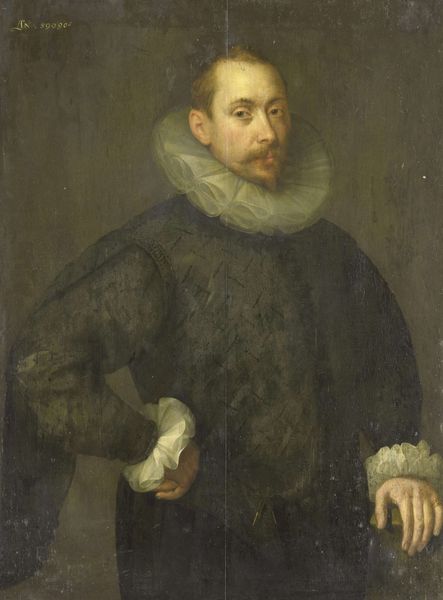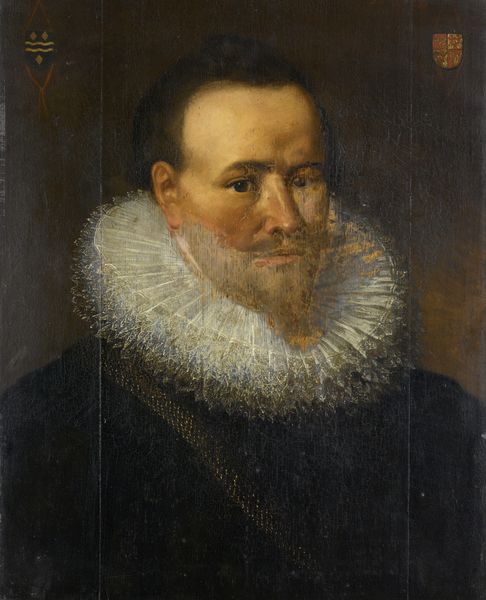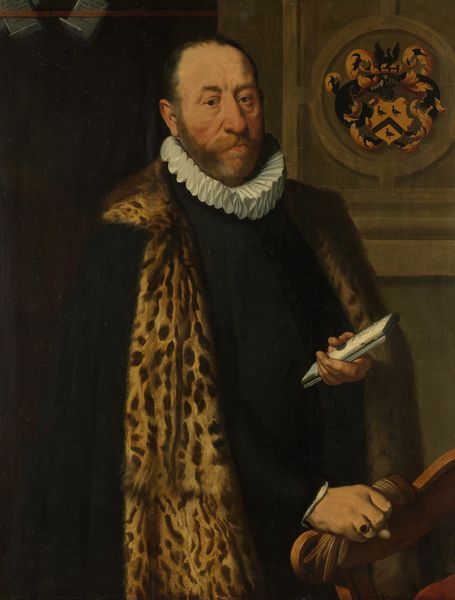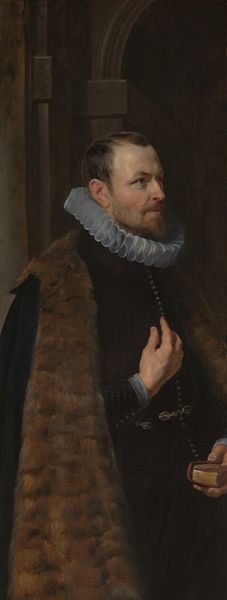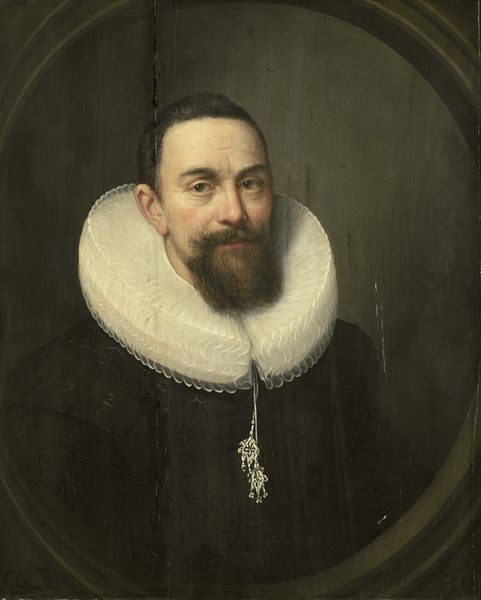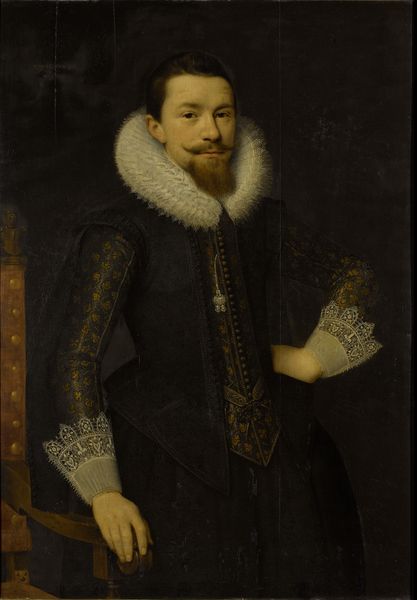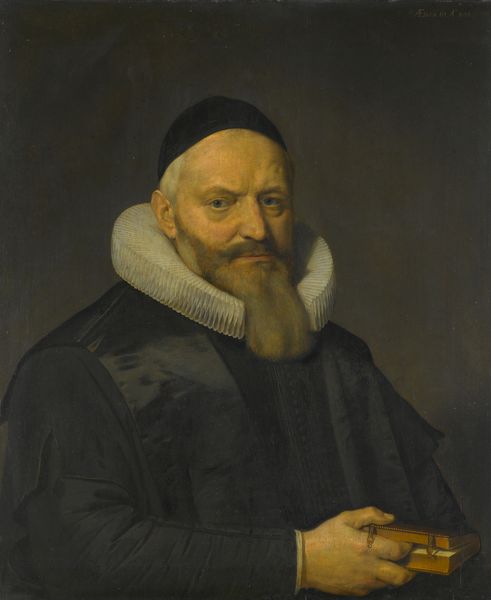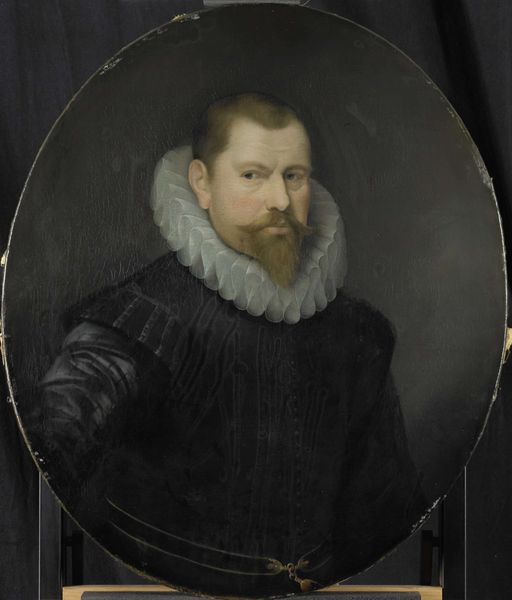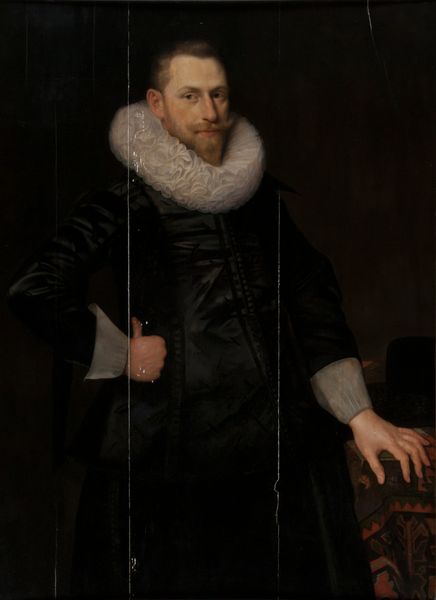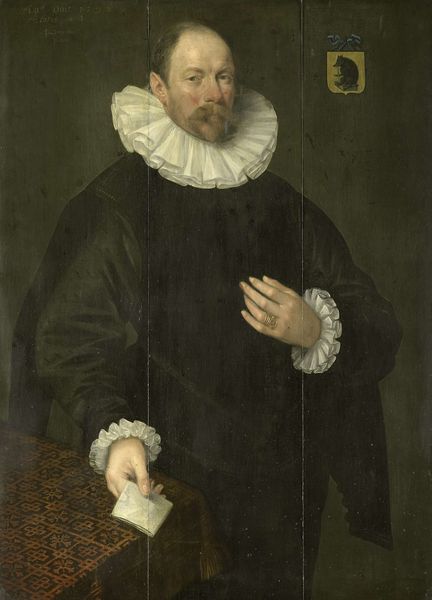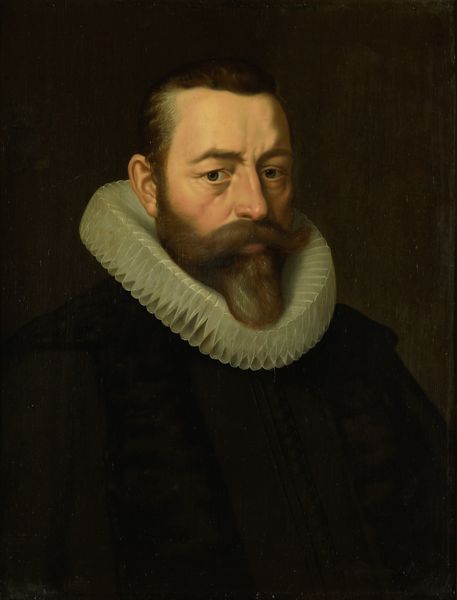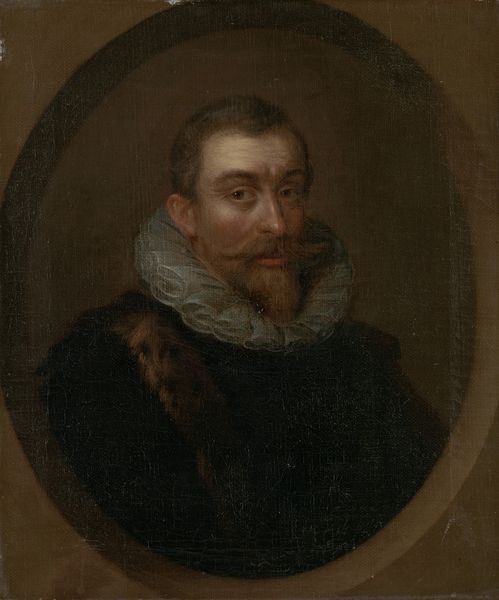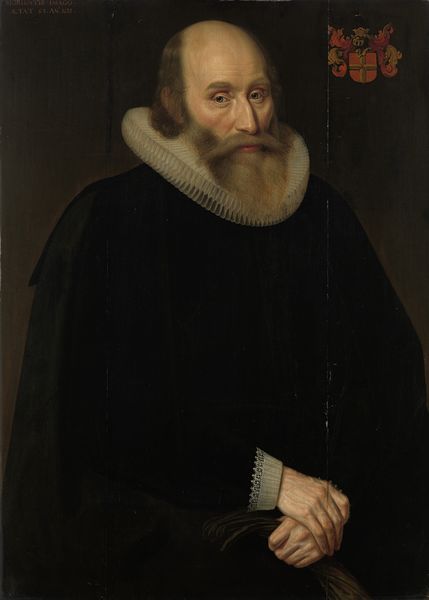
painting, oil-paint
#
portrait
#
baroque
#
dutch-golden-age
#
painting
#
oil-paint
#
realism
Dimensions: support height 114.6 cm, support width 82.8 cm, outer size depth 8 cm
Copyright: Rijks Museum: Open Domain
Curator: Oh, this painting! At first glance, the muted palette—mostly blacks and creams—gives it a serious, almost somber mood. Though something about the way the light catches his face keeps drawing me back. Editor: We’re looking at the “Portrait of Dirck Hasselaer,” painted in 1614 by Cornelis van der Voort. Hasselaer, who lived from 1581 to 1645, was a prominent figure, likely a wealthy merchant in the Dutch Golden Age. It's a stunning example of early 17th-century Dutch portraiture. Curator: It's more than just "stunning," isn't it? His gaze feels incredibly direct. I wonder what was going on in his head? He almost seems burdened by his achievements or is it just my own melancholy creeping in? Editor: Considering Hasselaer's role in Amsterdam's civic life—he served as a mayor, among other things—that "burden" might be a very real one. Portraits like this weren't merely decorative. They served to project status, authority, and moral character to reinforce social hierarchies. That elaborate ruff alone screamed power! Curator: Exactly! It's like he’s both projecting strength and vulnerability. The controlled pose, juxtaposed against his oh-so-slightly weary eyes… Maybe van der Voort wanted to show a multi-dimensional person beneath the mayoral facade. I also find a lot of dynamism in the fabric that he is holding in his left hand, this tiny element stands out by contrasting the relative uniformity of the blacks in the overall painting. Editor: Well, van der Voort, by portraying this elite figure, ensured the perpetuation of Amsterdam's socio-political structures of power in painting. In my reading, there isn't such intimacy; on the contrary, there is something detached and a commitment to representing the bourgeois patrons from the 17th century through their garments and facial features. Curator: Hmmm, the detachedness may actually stem from his clothing; the fact that they’re predominantly in dark colors is also noteworthy and plays a role here, as his dress blends in the monochromatic background. A clever decision from Van der Voort; It seems that Hasselaer transcends space-time this way... Anyway, regardless of the political intentions that one or the other see in this work, the interplay of light and shadow really gives the artwork something incredibly haunting. I can feel something in the depth of those browns! Editor: That’s a thought-provoking perspective, and certainly food for further thought, it showcases art's role as an artifact that can stimulate discussions for centuries. Curator: Exactly, these discussions are proof of the endless creative stimulus triggered by paintings like this one.
Comments
No comments
Be the first to comment and join the conversation on the ultimate creative platform.
